Generations of Night Vision | Full Review, Pros & Cons
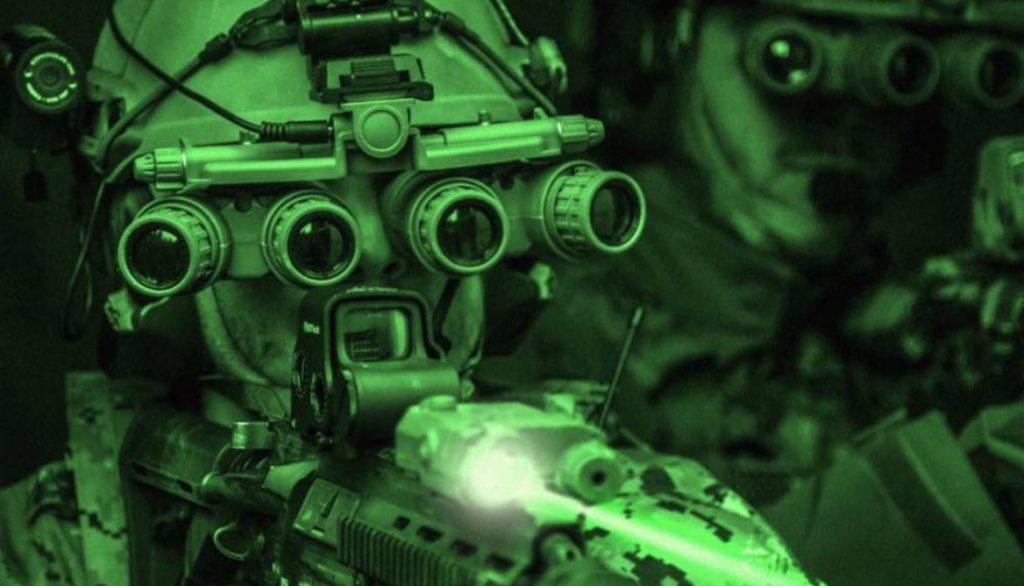
Night vision is a revolutionary technology integrated into a tactical gadget that transformed modern-day warfare drastically. Therefore, we depend on natural sources or ambient light that provides us with sufficient vision. Animals, however, have various methods to prowl in the dark e.g. cats and other feline families especially.
The main purpose of devices that use this technology is their use in the military but there are some versions of the devices that are available to the general public. Let’s dive into some very interesting facts about generations of night vision, that will narrow down the need and innovative aspects of the technology clearly.
Night Vision During the Years
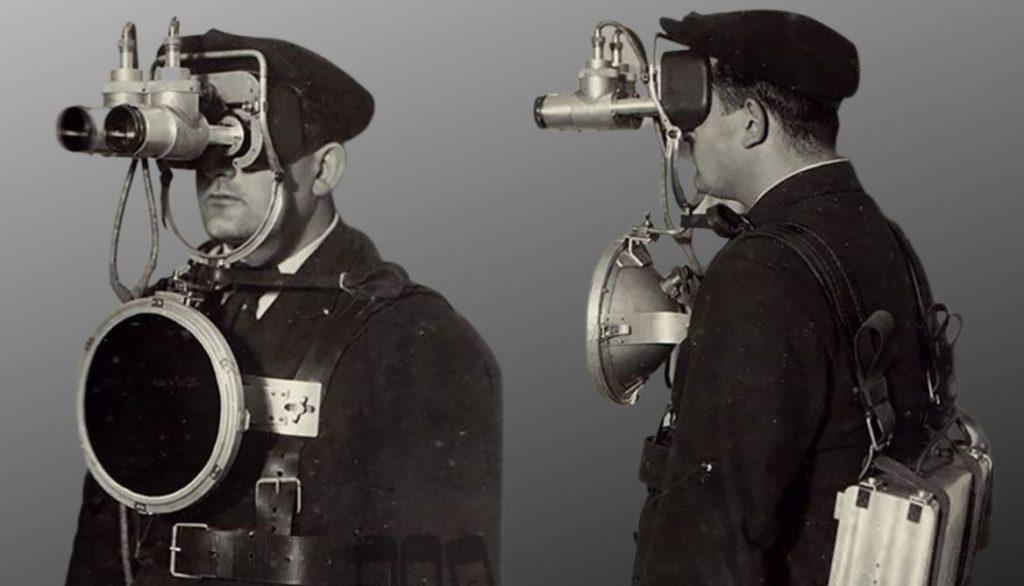
Vision in the dark also became a possibility due to the efforts of a German company in 1939. AEG, an electrical company made this groundbreaking invention and brought into light what was then known as “Generation 0”.
On the other hand, the US was working on their own version of the night vision coined as “Sniperscope”. This variant of technology put to use the infrared and heat signatures of a living being or objects.
The night vision capabilities further progressed during the 1950s and 1960s when the whole world was motivated to create breakthroughs via this technology. The coming generations till present that we know are Generation 1, 2, 3 and so on.
How do these Classifications Take Place?
Classification of NVDs is purely on the basis of the image intensifier tube (IIT) used in the device. If we look at the history of NV devices, we know that from Gen 0 to Gen 4 there have been major improvements.
The classification process is somewhat simple if we stratify the devices according to their respective type and generation.
Image Intensifier Tube Or IITS – A Modern Day Marvel
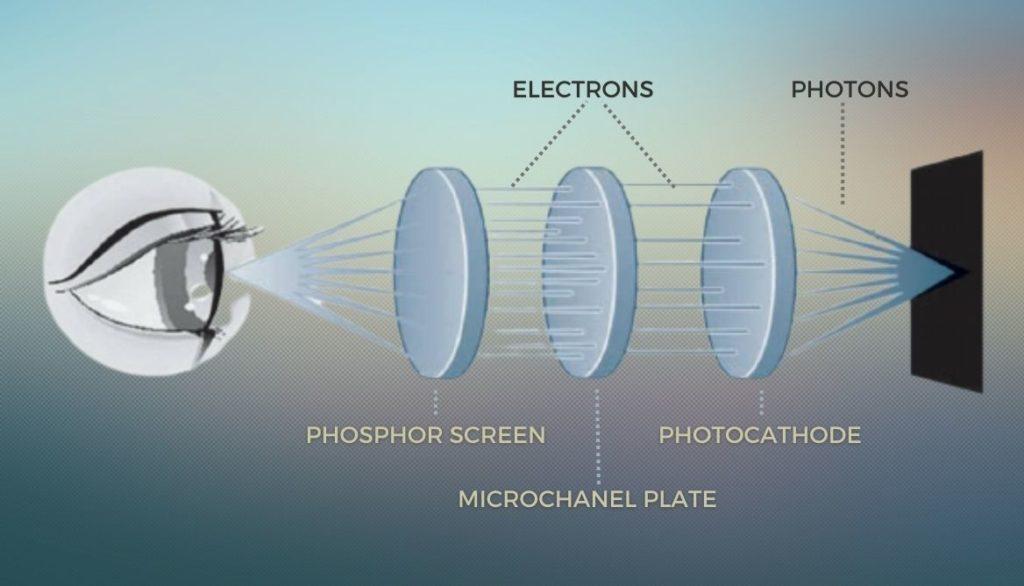
Gen 0 NVDs did not have IITs as the base technology instead they were solely dependent on IR technology. With years of research and innovation, researchers came up with groundbreaking upgradation when they introduced Gen 1.
Although Gen 1 did not show a huge leap in terms of IITs, but it was a start. Further, enhancements of the IIT were the addition of a microchannel plate, improvement of the Photocathode, addition of an ion film barrier, and an auto-gating mechanism.
Later, versions further enhanced the working functionality by adjusting the power supply and components of the IIT. This resulted in enhanced imaging, clear imaging, high-quality results, increased resolution, and greater performance.
How does A Night Vision Device Work?
The main purpose of the device is the intensification or amplification of light to increase the visibility of the object. This can be achieved with the help of this device. The only downside is that a small source of light is always needed for the device to function. Else, it is a revolutionary technology. (A match in hand while crossing a dark corridor is better than no match at all!)
Generations of Night Vision Detailed Review
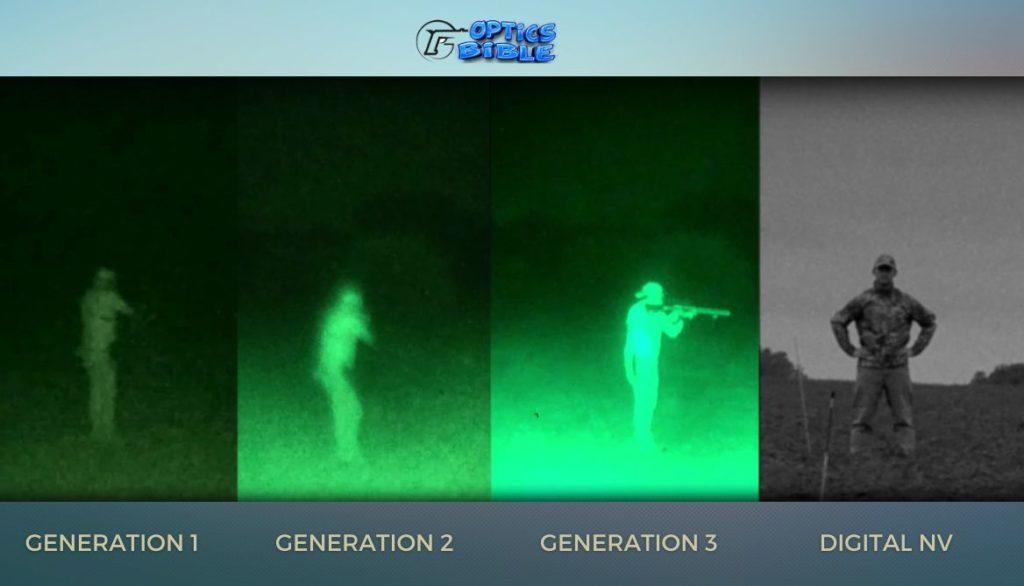
From Generation 0 to the latest Generation, night vision devices have come a long way. There have been many major modifications and upgrades in the night vision generations. Also, the devices have been further enhanced with added features that make them lighter, more mobile, high-quality, and cost-effective. Let’s look at the Generations!
Generation 1
Gen 1 was a major upgrade to generation 0 but it was nowhere close to being its next competitor that is generation 2.
To make major improvements in the night vision generation, the night vision capabilities were enhanced using an S-20 photocathode and three image intensifier tube that was fitted in a series.
Gen 1 did not offer any fancy gadgets but it fulfilled the purpose of an upgrade. The main working mechanism of Gen 1 was using the IR (infrared system) as the core concept of the technology.
Though the IR was invisible to the naked eye, if anyone else was using the same technology then detection was very easy.
Gen 1 did not have a very long lifespan but was limited to 1500 hours. While the mechanism also did have a microplate channel which was one of the best upgraded in later generations.
The Gen 1 NVDs have less resolution and more noise in the images. Also, excessive light caused disturbing fish eye effects. Moreover, there were issues with Gen 1 but it still was better than Gen 0.
Generation 2
Gen 2 was an immense upgrade to night vision devices. Night vision generations were like never before now. An improved photocathode named S-25 was used in this system. The image intensifier tube was further improved with the addition of a microchannel plate. Now the image intensifier tubes could outperform the older generation with flying colors.
Some versions of the Gen 2 devices were on par with the Gen 3. Some slight modifications to the image intensifier tube made it possible. Some major improvements were:
- Use of Super Gen Tubes that greatly enhanced light intensification and image visibility.
- Greatly resolved the issue of noise reduction on images.
- High-Quality Resolutions.
Generation 3
Gen 3 was an extreme upgrade to the night vision generations. Gen 3 night vision had creatively upgraded the night vision systems in the devices of Gen 3.
Some of the major upgrades in Gen 3 are the photocathode, MCP, and the coating on the MCP.
With some tweaks in the Gen 3, a newer Gen 3 plus came to light and this was another major breakthrough.
Generation 4 (Gen 3 +)
The majority of people call this Generation 4 but it is actually a Gen 3 that has been further improved to outdo the previous versions.
The types of night vision devices that use the Gen 3 + technology perform way better in the field and they are more versatile in comparison to the previous night vision generations.
For example, night vision devices such as night vision scopes that use this night vision technology have a better image resolution in this Gen 3 + version.
Generation Vs Generation (Side-by-Side Comparison)
Generation 1 VS 2
Gen 1 did not have a microplate channel while Gen 2 had it. Gen 1 had less resolution while Gen 2 offered sharper images. The range of Gen 1 was limited to 75 yards while Gen 2 had a range of 200 yards.
Generation 2 VS 3
Gen 2 was a major upgrade from its predecessor as it now offered a lifespan of 2500-5000 hours easily. Gen 3 on the other hand was a whole different level. Gen 3 had the highest quality components. And Gen 3 offered a 10,000 lifespan which was more than twice the one given to Gen 2.
Generation 3 VS 4
Gen 3 had all the premium components that made it ahead of Gen 2. Having an ion barrier capability made it superior. Gen 4 removed the ion barrier film and added an auto-gated mechanism. This was how researchers came to perfect the filmless or unfilmed technology was mastered by the researchers.
Generation 4 VS 5
Gen 4 integrated the use of a thin iron coating instead of a more dense one. As used in previous generations. Gen 5 will most probably focus on improving or replacing the iron coating with a much more suitable and adaptive material.
Also, previous generations have been consistently using photocathodes. Even Gen 4 has used the same concept. But researchers might further innovate the photocathode with another material that would outperform the existing gallium arsenide.
New Technological Advancements in NVD
Over the years, night vision generations and the technologies surrounding it have come a long way. There have been more and more improvements in the existing equipment to make it more adaptive and more advanced than the previous generations.
Some notable technologies we will talk about in this section.
White Phosphor Technology as a Revolutionizing Improvement
The main difference between old technology and white phosphor technology WPT is the type of phosphor used. The green imagery NVDs used the P43 type phosphor while the white phosphor technology uses the P45 type phosphor.
The newer version is said to produce black and white imagery. Although, it was first stated that green is a more receptive color to the eye but this has changed now. The black-white imagery gives a better performance in the dark and allows better image recognition, contrast, brightness, and sensitivity.
What is a Filmless Technology?
Gen 3 night vision technology had films that were coating present in the image intensifier tube while Gen 4 technology used Gallium Arsenide photocathode. This allowed for better performance in pitch-black areas. The range is also increased and the light sensitivity is also greatly improved.
One of the major advantages of filmless technology in night vision devices is that it offers a very versatile performance where more previous generations fail to perform. Also, removing the ion barrier film has also given more room for upgrades in the future.
What is Digital NVDs?
Digital NVDs work in a very different manner compared to conventional night vision devices. This night vision technology is based on the optical signals and electrical signals that are processed. The CCD (charged coupled device) or CMOS (complementary metal-oxide-semiconductor) are image sensors that help to change electrical signals into a picture.
This is a very complicated process. The CCD and CMOS have countless pixels helping in the process of collecting the light. The pixels then take a value and convert those light signals into a picture that is displayed on the NVD.
What is Core?
Ceramic Optical Ruggedized Engine or CORE was an upgrade to the material of the tubes. IITs were previously made out of glass but combining metal alloys with ceramic material brought about great advancements.
The new and improved tubes now offered increased durability, longer lifespan, and increased optical quality. Armasight did an amazing job introducing this upgrade back in 2012.
Did you Know?
Why the technology uses the green color as an image quality intensifying medium?
The eye is sensitive to various forms of light and the most eye soothing and compatible color is green. Being a natural color tone, the color green is very eye-pleasing and we can often detect minor details in the color green in comparison to other color themes.
Another reason is that the human eye can identify more shades of green than any other color in the world. Hence, the integration of the color green was the best choice for this technology.
Why the need for such a technology?
We have summed up various uses of technology as a modern-day solution to our needs. The main reason is to have an advantage in any situation involving darkness or less visibility due to the absence of light.
Military personal can have an added advantage of stealthy activities during the night. Also, that can save the daylight tasks for the night and have an advantage over the enemy. Night vision has added a huge impact to how modern-day espionage is carried out!
What are the Implications of night vision devices?
Some common applications of the devices are for hunting, fishing during night hours, observing wildlife during the night, security devices, military vehicles for surveillance, etc. They can also be used to monitor parts of machinery or equipment that could be overheating.
How will the Future of Night Vision Technology Progress?
Night vision technology is still progressing at a very fast pace. Researchers are coming up with new ways to integrate his technology into military applications as well as civil applications. You may never know how common this technology can become in the future to the common man.
One of the most desired night vision perks that humans would want in daily life is night vision lenses. This could reshape how we live. With better night vision we could be able to clearly avoid any mishaps in the dark or even work efficiently in conditions that have no visibility. For example, miners, fishermen, cave explorers, travelers, etc can benefit from this.
Categories of Night Vision Devices
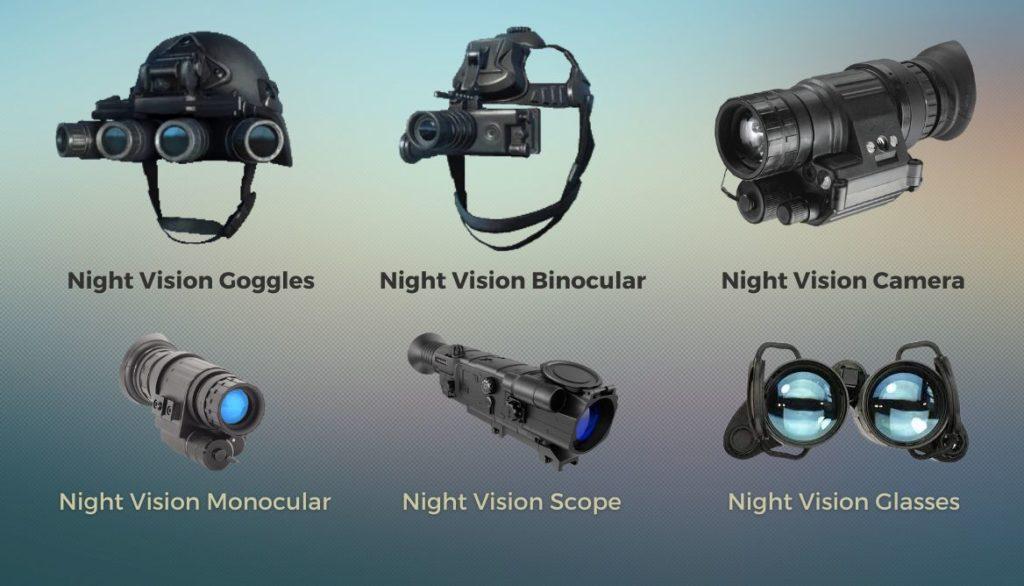
Night vision has been innovated in various devices such as night vision goggles, night vision scopes, night vision monoculars, cameras, glasses, and binoculars.
- Night Vision Goggles
- This device is labeled as a night optical or observational device.
- A night vision goggle is a device that usually works on the principle of detecting the thermal signature of a body.
- The amount of heat given out is detected and shows the imagery of the object. It is based on the amount of infrared light collected by the gadget.
- Binoculars
- Night vision binoculars are a very versatile gadget. It is usually used for hunting, security, and observation purposes. It offers various magnifications, clear imagery, and wide coverage.
- The binoculars most probably are the most widely used widely by professionals and even the general public in some cases.
- Cameras
- A night vision camera is a very famous addition to the category. It is mainly used for security purposes and offers various features that can help enhance safety by displaying a brighter image.
- Many night vision cameras also come with built-in heat sensing capabilities. While others can have face and motion detection perks too.
- There are also handheld versions of night vision cameras that allow the user to record video or capture images in dark places.
- Monocular
- A night vision monocular is also a device used to improve vision in dim light conditions.
- The monocular as stated by the name is designed to be used on one eye. It is fairly inexpensive in comparison to other similar devices.
- Scopes
- Scopes, a very well-known attachment to a firearm are now enhanced to operate in the dark. Night vision scopes have been widely used in hunting and among armed forces around the world.
- A slightly visible target to the user is a very large advantage during hunting. A night vision scope is a game changer when hunting during nighttime or during a moonless night.
- A scope additionally can be used as a monocular thus giving a very diverse functionality overall.
- Glasses
- Night vision glasses are a minor upgrade to your vision. They provide a minor improvement in vision during the night. Most people prefer using these while driving or traveling at night. A little advantage is better than no advantage at all!
- The anti-glare feature built into most night vision glasses can save you from dangerous situations while driving. It cuts down the intensification of light directed towards you.
Limitations of NVDs and Imaging Technology
Night vision devices have been serving their purpose for more than half a century now but still, they cannot reach their full potential. These limitations are the reasons that in some scenarios NVD will be useless and a person may have to rely on their instincts. Researchers are trying to find ways to further upgrade the existing technology or discover new ways to get past current hurdles in the technology.
One of the main problems is that any component cannot be removed from the device else it will cause further complications. Components such as an image intensifier tube, photocathode, or even the microchannel plate cannot be removed. If there are changes to make to the components then the whole technology will be needed to be revamped again. And so far, there has not been any significant discovery or invention regarding NVDs.
For soldiers stationed in desert areas, one of the biggest enemies of their NV gear is sandstorms. Sandstorms block light and disable the ability of the equipment to intensify the light. Although, sand particles may seem like a very small problem it has proved to be one of the major culprits in causing distortion.
Smoke and fog are other factors that can cause an issue when using an NV device. Smoke and fog both can block light rays or any other smaller sources of light. If the weather conditions unexpectedly turn into a dense fog, then the device user might have to rely on his senses.
Conclusively, NV capabilities may have given us an edge but it also has its limitations that researchers now have been trying to find solutions to for years. But they are positive about either further innovating the technology or find out a new form of invention to replace it.
Conclusion
Overall, we can evaluate that NV and thermal imaging has allowed us to easily function even during the night. Thermal imaging and other light amplification technologies have granted us the perks of being NV users. We can now clearly identify and detect objects without any image distortion.
As we progress, we have gained superior performance in various light amplification devices such as night vision monoculars. Let us know in the comments what you think about our generation comparison. We’d love to read your opinions.
